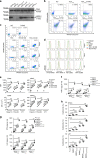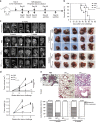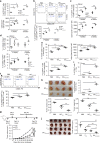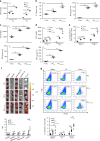Alarmin-painted exosomes elicit persistent antitumor immunity in large established tumors in mice
- PMID: 32286296
- PMCID: PMC7156382
- DOI: 10.1038/s41467-020-15569-2
Alarmin-painted exosomes elicit persistent antitumor immunity in large established tumors in mice
Abstract
Treating large established tumors is challenging for dendritic cell (DC)-based immunotherapy. DC activation with tumor cell-derived exosomes (TEXs) carrying multiple tumor-associated antigen can enhance tumor recognition. Adding a potent adjuvant, high mobility group nucleosome-binding protein 1 (HMGN1), boosts DCs' ability to activate T cells and improves vaccine efficiency. Here, we demonstrate that TEXs painted with the functional domain of HMGN1 (TEX-N1ND) via an exosomal anchor peptide potentiates DC immunogenicity. TEX-N1ND pulsed DCs (DCTEX-N1ND) elicit long-lasting antitumor immunity and tumor suppression in different syngeneic mouse models with large tumor burdens, most notably large, poorly immunogenic orthotopic hepatocellular carcinoma (HCC). DCTEX-N1ND show increased homing to lymphoid tissues and contribute to augmented memory T cells. Importantly, N1ND-painted serum exosomes from cancer patients also promote DC activation. Our study demonstrates the potency of TEX-N1ND to strengthen DC immunogenicity and to suppress large established tumors, and thus provides an avenue to improve DC-based immunotherapy.
Conflict of interest statement
The authors declare no competing interests.
Figures







References
Publication types
MeSH terms
Substances
LinkOut - more resources
Full Text Sources
Medical
Research Materials
Miscellaneous

